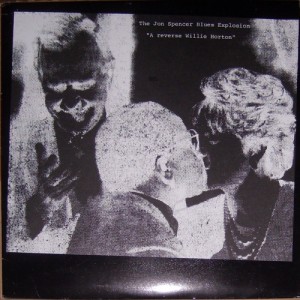| 25 July 2024 | Paperface Zine | – |
 |
|
| VIEW: | |
| NOTES: | |
| Interview with Larry Hardy of In The Red Records which mentions Jon Spencer, The Cheater Slicks, Gibson Bros., Pussy Galore and The Jon Spencer Blues Explosion.
See the full article and parts 2 and 3 on gimmepaperface.com. |
|
| ARTICLE: | |
| Larry Hardy is the founder and owner of In the Red Records (ITR). For the past 33 years, ITR has been one of the leading independent labels. ITR’s discography runs the gamut from The Gories to Andre Williams to Redd Kross. Throughout all the turbulence that’s impacted the record industry—from streaming destroying the traditional business model, long vinyl turnaround times, etc.—Hardy and ITR have persevered. Most importantly, the quality of the label’s releases has never wavered. The following interview is the second segment of a three-part series. It covers the first nine years of ITR’s existence. In part one, we covered Hardy’s early years and navigating the late ’70s punk scene in Los Angeles. The last installment will be posted at a later date and cover the years 2000 to the present.
Ryan Leach: I know you were doing some A&R work for major labels back when that was still a thing. Larry Hardy: That was later on through David Katznelson. By then I had started In the Red. I met David through my wife Melanie (Vammen) who was playing in The Muffs. He had signed The Muffs to Warner Bros. David and I became friends. I was turning David onto stuff that I was into. Particularly with The Gories, David was interested in seeing if there was a way he could work with them at Warner Bros. He thought they had the potential to be big. After a while, he hatched this idea—it was mainly to get me the money I needed for a Cheater Slicks record (Don’t Like You, 1995)—David said, “I can do a ‘first-look deal’ where you bring me bands that you think I might be interested in. I’ll give you $5,000. Ultimately, I’ll probably say no to all of them, but it’ll give you the money you need to cut the Cheater Slicks record.” RL: That’s amazing. LH: Yeah, it was basically a friend doing me a favor. It was cool. At first, I was just releasing 45s. And then I wanted to do a Cheater Slicks LP. Jon Spencer was going to produce it. At the time, he was hot shit. I thought, “An album produced by Jon Spencer can get The Cheater Slicks a lot of attention.” Their songwriting was amazing. I thought that was going to be their big record. If I didn’t do it, Sympathy would’ve likely done it because I lacked the resources. But then David Katznelson came up with that idea that allowed me to do it. The Cheater Slicks’ Don’t Like You is one my favorite records that I’ve released. It all happened in short order. Originally, I had planned on doing no LPs. And then The Cheater Slicks and The Bassholes (Blue Roots [Archive Series—Volume One]) offered me albums. I was like, “Okay. I guess I’m doing LPs now.”
LH: I knew Chris through The Pandoras, when I first started dating Melanie. Her best friend was Kim Shattuck, who was the bass player in The Pandoras. Kim’s boyfriend was Chris Ashford. I got along with him really well. I couldn’t believe it; Chris put out the very first Germs single on What? Records. He was still releasing records, but on his label called Iloki. This was in the late 1980s. I had been talking about starting a record label for a while. I had seen John at Sympathy start his imprint from scratch. I was friends with Tim Warren at Crypt. I knew it was possible to do a record. I wanted to do a couple—just to justify my existence as a record geek. I felt like I was involved in music, yet I wasn’t at the same time. And putting out records would justify my existence. When I brought it up to Chris Ashford, he was like, “Yeah, I can go in on it with you if you’re interested.” At the time, 7″s were getting hot again. Sub Pop brought them back in the 1980s with grunge and their singles club. They were chic again. That’s when we hatched the plan. When I heard The Gories, that’s when I decided, “If this band says ‘yes,’ I’ve got my first release.” RL: How long was Chris involved with the imprint? LH: Not long. What happened was I was supposed to do The Gories 7″, but they took over a year to finally give me the songs. They were kind of breaking up in the process. I got antsy. Since I was going around saying I was putting out records, I got offered a Morlocks single (“Under the Wheel” b/w “Hurricane a’ Coming”). They were a San Diego-based garage band that I really liked. That was the first record I did, even though, again, it was supposed to be The Gories. The second release (“Bud, Sweat and Beers”) was by this Seattle group that I knew called The Kings of Rock. The guys in the band went on to be in Gas Huffer. Anyway, they said, “Hey, we have some leftover material for a 45.” The Gories ultimately ended up being my third release (“Here Be the Gories”). Those were all done with Chris involved. After that, I met Jon Spencer who was in the Gibson Bros. What wound up causing Chris and I to not work together anymore were issues over a Jon Spencer single. Jon had said to me, “Hey, I’ve got this new band called The Blues Explosion. We have some recordings. I have songs for a 7″. Would you like to do it?” I told him, “Absolutely.” I was a huge fan of Pussy Galore. He sent me a tape of The Blues Explosion material that they had already recorded. Jon’s idea was to do a 7″ without a picture sleeve. He wanted the labels to look like these Charlie Feathers 7″s. We mocked those up. Chris was really turned off by the idea of it not having a picture sleeve. He mentioned it would be hard to sell. But I told him, “This is Jon Spencer from Pussy Galore. He has a following. We can sell them.” And then Jon asked for an advance. It wasn’t a lot. 50 cents a record or something. I think it was $500 total. That’s when Chris said, “I know you think Jon’s great, but I don’t think this record is going to sell. And I don’t think we’ll make our money back.” I told him I was doing it. So, that was the first record I did without Chris. RL: Ultimately, you made the right call. LH: I made a lot of money on that one. The Blues Explosion became a hot-shit band. We repressed that 7″ several times. Nevertheless, there were issues with it lacking a sleeve. I remember Midnight Records on the East Coast took a bunch. When they got them, they contacted me saying they were sending them back. They didn’t want them because they lacked a picture sleeve. Months later as Jon‘s star was rising, they contacted me again, asking if we still had the copies they’d sent back. RL: An about-face! LH: We turned it into a series. For years, we kept doing them. It got to a point where we’d press 10,000 copies in advance. RL: Unbelievable. Those were different times. LH: Definitely different times. RL: Besides Jon Spencer, a big boost to In the Red early on was the Free Kitten 7″ Lick”, in 1993. LH: That came through Jon Spencer. That was a big one. I felt like a label after doing that 7″. I had done The Blues Explosion 7″. I’d released singles with the Gibson Bros. and The Bassholes. Then Free Kitten. People were now buying stuff from me who previously wouldn’t give me the time of day. LH: Get Hip. Estrus had mail order. Dave Crider championed my label. Tim Warren at Crypt really helped me out. Cargo was still going and they started buying from me after The Blues Explosion and Free Kitten 7″s. They were a bigger distributor at the time. Revolver was an early one. I would even take stuff into stores. I remember going into Bleeker Bob’s in Hollywood, asking, “Hey, do you want some of these?” It was great when Revolver took it all over. Being a bill collector is not my forte. RL: Especially on 7″s to stores. I’ve done that. LH: Exactly. With 7″s, you needed to have something else coming out for them to pay for the last ones. Get Hip was a nightmare to deal with. RL: I imagine Jon Spencer was an outlier. Nevertheless, how many records would you press at a time during this period? LH: With something like the Gibson Bros. 7″, I’d press 1,000 copies. It was usually 1,000 copies to start. And they were moving. The first 7″ we did with The Morlocks, we did 750 copies and hand-numbered them. Everything else was 1,000. RL: Blacktop was a hallmark of that period. LH: That was crazy. Blacktop was sort of put together. They weren’t an organic band. That was the brainchild of Darin Lin Wood. I helped it come together. It sounded so great on paper. I wanted to get that record out. RL: I’ve had a couple people tell me that Blacktop’s I’ve Got a Baaad Feelin’ About This is their favorite In the Red release. LH: Really? RL: The last person was a bookstore owner in Marfa, Texas. LH: Well, that record was made in Texas. That was cool. It felt like a triumph at the time. Like I said, I started the label to release a record by The Gories. And they were breaking up when I contacted them. When I met ’68 Comeback, Darin Lin Wood was in the band—he was also in Fireworks—and he was telling me that his dream was to get a band going with Mick Collins. At the time, we were both thinking, “What is Mick Collins doing? He’s a great singer and he’s not doing anything.” When ’68 Comeback got to Detroit, Darin went out of his way to meet him. He pitched doing what became Blacktop to Mick. “We can do this band and cut a record in Texas.” We figured out how much it would cost to fly Mick out to Texas to get this group together. That’s how Blacktop formed and it was the first time I’d met Mick in person. David Katznelson produced the record—and this was during that period when I had that deal with him going. David was still interested in Mick. So, Dave and I drove down to Denton, Texas, and Mick flew there. I hung around in the studio watching the record get made while Dave worked with them. I first met James Arthur on that trip as well. I thought the record turned out great. Nevertheless, the band fell apart spectacularly right after that. RL: I know The Consumers’ All My Friends Are Dead is a record going back to your teenage years. LH: I had a cassette of those recordings since I was in high school. RL: You were a young person hanging out with Paul Cutler and the rest of 45 Grave. That’s pretty heavy. LH: I had a friend who was a year or two older than me named Rick Crowell. He moved to California from Colorado. We became fast friends. In some ways, I feel bad because I turned him onto punk music. He was a kid into horror movies. He loved Alice Cooper and The Stones. Rick had not heard punk rock. I told him, “You need to get your hair cut. You need this record and that record.” He fell into it quickly. After about a year, Rick discovered 45 Grave and became obsessed with them. He also got hooked on heroin which he became acquainted with through those people. He was likely predisposed to it. He drank a lot when I was completely sober in high school. He wound up living with 45 Grave. Anyway, I went to a show with him—either at the Starwood or the Whisky. We used to do this thing where before a show, we’d go with our swim trunks to the Tropicana Hotel. We’d swim there and hang out at the pool. RL: That rules. LH: Yeah, I’d be swimming and think to myself, “I’m swimming in the same pool Iggy did when he recorded Fun House.” No one thought twice about two random dudes swimming in the pool. They probably thought we were in some band or something. That was the kind of clientele they had. We made plans to get up early in the afternoon, swim in the pool, and then swing by and see 45 Grave soundcheck. In between the soundcheck and the show, 45 Grave was having a BBQ at Mary’s (Dinah Cancer) house. I tagged along. At Mary’s house that day—that’s where I first heard The Consumers’ cassette. They were playing it. That was a weird day. Geza X was there. Don Bolles, Paul Cutler, Rob Ritter—all their friends. And they seemed way older and more intense than the people I was used to being around. The guys in T.S.O.L. seemed wholesome by comparison. Anyway, The Consumers tape blew me away. So, when Rick ended up moving in with them, I asked him to dub me a copy of that Consumers cassette. He did. I have had it since high school. That would’ve been in 1981. Unfortunately, Rick died a few years ago. RL: Someone I forgot to mention was the late O (Otis Barthoulameu). I know he played a helpful role early on with In the Red. LH: I had seen O around forever. I got to know him better through The Muffs. He had computer and layout skills back when very few people did. When I needed to get record covers and center labels laid out, he’d do it for me. He created my first ads. I had no computer skills. O did it all for free. He was stoked to do it. He liked what I was doing. RL: Everyone seemed to like O. LH: You wouldn’t trust anyone who didn’t like O. He was a sweetheart. Really funny guy. RL: When did Jimmy Hole come into the picture? LH: Late 1990s. When I started going out with Terri (Wahl) from The Red Aunts. Jimmy and Terri both worked at Epitaph. I met Jimmy through her and we became friends. Jimmy was getting really good at design and layout, so it only made sense to work with him. I never developed that skill. RL: When did your mom’s house no longer become In the Red’s headquarters? LH: Even when my mom’s Anaheim house was listed on those early records, I no longer lived there. I thought it looked cool. I remember early Crypt LPs had a Morristown, New Jersey, address that Tim told me was his parents’ house. Similarly, I thought putting Anaheim on a record looked funny. I think The Urinals had an Anaheim address on one of their early 45s. RL: That would’ve been Kjehl’s (Johansen) address. He was from Anaheim. LH: Okay. I remember thinking that was also weird. I knew they were UCLA guys. When the label started, I was living in Fullerton. Then moved to West L.A. shortly after I started the label. Did stuff there for a while. Melanie (Vammen) and I split up not too long after I got there. I wound up in Burbank.
RL: Burbank is where The Necessary Evils came together. LH: That’s right. The place in Burbank I was renting had a storefront with an office; an apartment was attached to the rear of it. So, I was living on an industrial street surrounded by stores. There was a courtyard with a separate apartment that was rented to this couple. They moved out quickly after I got there. Then Steve Pallow and his girlfriend Lisa moved in there. When James (Arthur) moved out to Burbank to do The Necessary Evils, he and D’Lana Tunnell lived a block away. We all lived close together. RL: I know Necessary Evils was a favorite band of yours. LH: Yes. That’s another band that happened inorganically in a way. Steve Pallow, after The Beguiled, was over—Mike Ball from The Beguiled was killed by a drunk driver. When that ended, Steve had started this band called The Black Panthers. They had a demo tape that Steve gave to James. James was touring with The Cheater Slicks and played if for them. The Cheater Slicks loved it. I liked the tape too. I had never met Steve. James took me over to meet him. He told me The Black Panther weren’t a band anymore due to a falling out. James said he wanted to revive the band. So, that’s how that happened. James would move out to Burbank from Texas and they’d get a band together. They’d redo all those Black Panther songs and I would put it out. Of course, Jimmy Hole ended up being in the band. RL: 1995 was the year you were able to quit working at Alberton’s and focus on In the Red. You were helping run Birdman Records. LH: That was the beginning of it. The Blacktop LP sold well and it received good press. I followed it up with The Demolition Doll Rods’ first album (Tasty, 1997). Believe it or not, there was a ton of hype around them. Jon Spencer was huge at the time and he was taking them out as his main support. He really liked them. It was a coup. Mick Collins produced half the record, Jon Spencer the other half. And then The Cheater Slicks LP came out around then. The records all sold five or six-thousand copies. Suddenly, I was a real label. RL: So, it was a combination of working with David Katznelson and having a string of strong records—money coming in—which allowed you to focus exclusively on the label. LH: Yeah. Eventually, I did a live Pussy Galore LP (Live: In the Red, 1998) that sold well. But those were different times. You’d press 1,000 copies of everything just to start. And hope you could do more. Say it was a dog that didn’t sell well. It would still sell through its 1,000 copies eventually. Recently, I’ve been stuck with records where I think, “I’ll be stuck with these albums until I throw them away.” RL: I know that feeling all too well. LH: I think everyone with a label today knows it. > |








![Freedom Tower: No Wave Dance Party 2015 [Green Vinyl] (LP, UK)](http://www.pop-catastrophe.co.uk/wp-content/uploads/2015/01/freeuk-300x300.jpg)
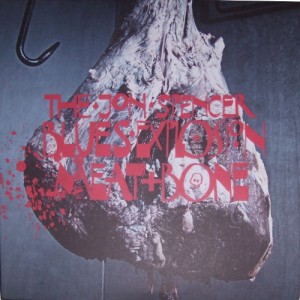
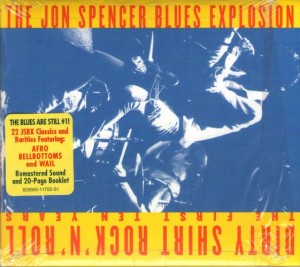
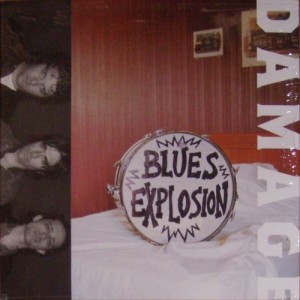
![Plastic Fang [Fang Pack] (CD, UK)](http://www.pop-catastrophe.co.uk/wp-content/uploads/2012/11/img9881-237x300.jpg)
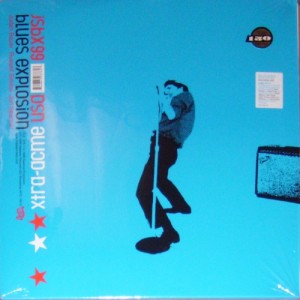
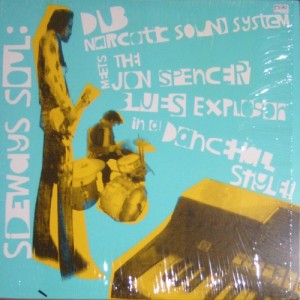
![Acme + Acme Plus [2010] (2xCD, US)](http://www.pop-catastrophe.co.uk/wp-content/uploads/2012/11/img041-300x272.jpg)
![Controversial Negro [2010] (CD, US)](http://www.pop-catastrophe.co.uk/wp-content/uploads/2012/10/img996-300x265.jpg)
![Now I Got Worry [2010] (CD, US)](http://www.pop-catastrophe.co.uk/wp-content/uploads/2012/11/img1541-300x267.jpg)
![Experimental Remixes [2000] (2xLP, UK)](http://www.pop-catastrophe.co.uk/wp-content/uploads/2013/08/1cDSC01688-300x300.jpg)
![Orange + Experimental Remixes [2010] (2xCD, US)](http://www.pop-catastrophe.co.uk/wp-content/uploads/2012/09/img884c-300x269.jpg)
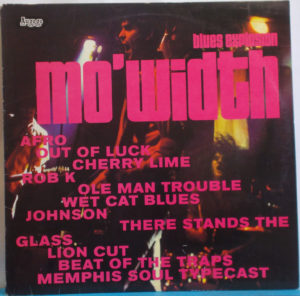
![Extra Width + Mo’ Width [2010] (2xCD, US)](http://www.pop-catastrophe.co.uk/wp-content/uploads/2012/10/img041c-300x264.jpg)
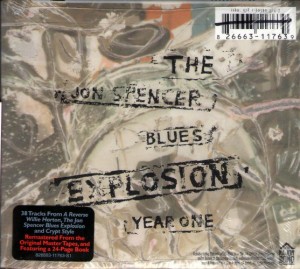
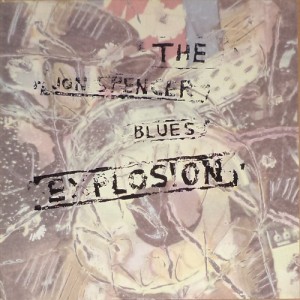
![Crypt Style [Alt. Label Design] (LP, GERMANY)](http://www.pop-catastrophe.co.uk/wp-content/uploads/2013/07/1cDSC01619-300x300.jpg)
